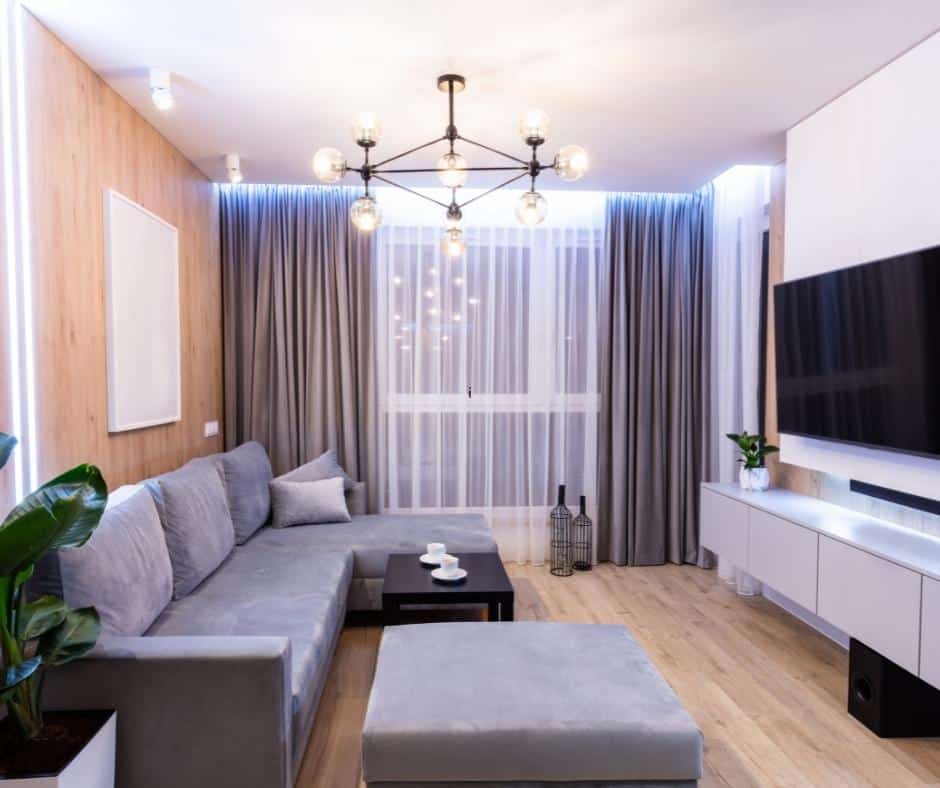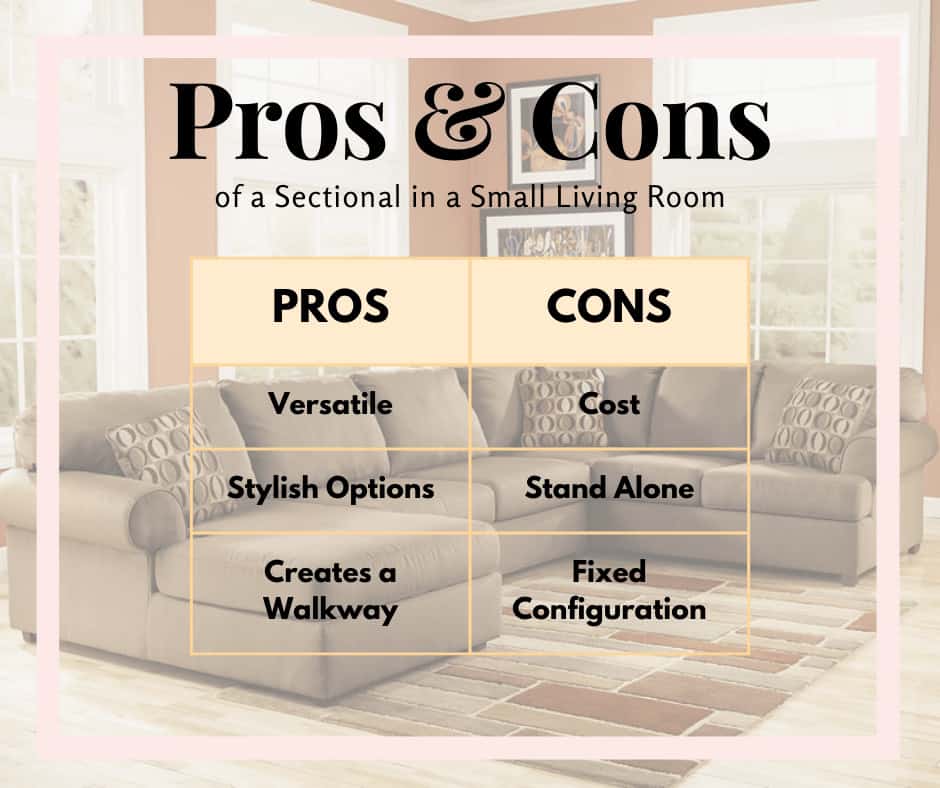People often think they can’t put sectionals in small living rooms because they will take up too much space. The theory is that sectionals belong in larger living rooms. However, that theory isn’t true.
A sectional can look great in a small living room, but it requires some work. You can’t just put it anywhere. You’ll need to plan it out so this piece of furniture doesn’t look awkward in such a small space.
In This Article We'll Discuss
Can You Place a Big Sectional in a Small Living Room?
You don’t want to put a large sectional in a small living room because it will swallow the small space whole. Instead, choose a smaller sectional with a low back and low armrests. It will make the room more inviting and open without overwhelming it.
To ensure the sectional fits, you should measure the room first. Afterward, measure the sectional’s long side from the armrest to the corner. Subtract the room’s length from the sectional’s long side. The idea is to leave 18 inches of space on each end of the sectional.
But, experts say there should actually be more— between 21 inches and 24 inches.
In addition, measure its vertical reach and wall-to-wall depth. Measure the sectional from top to bottom for height and the armrest for depth. The backside should not be tall enough to be a distraction. The depth should fit a coffee table with ample room to walk to the couch and around the coffee table.
Do Sectionals Save Space in a Small Living Room?

Having a sofa, loveseat, and chairs in your small living room will make the space appear smaller. The furniture makes it cramped and cluttered.
A sectional is a space saver. It offers plenty of seating with no extra furniture required. Add a large area rug, a coffee table, and a mounted television and the living room is complete. This one piece of furniture will make the room larger, provide plenty of seating and keeps the area clutter-free.
Six Ideas for Placing a Sectional in a Small Living Room
Pick the right sectional. Corner sectionals like L shape, U shape, and chaise will complement the room. However, curved sectionals can change the small room’s rectangular shape in a negative way.
Place a sectional in the living room’s corner wall. Doing so will keep the sectional out of the way so people can walk around without bumping into it.
Leave no less than 18 inches of space between the wall and the sectional. This will provide enough room to clean behind the furniture. It will also make it easier to move around the space. A sectional pushed to the wall with no space between does the opposite.
Place a sectional near an eye-catching focal point in the living room. The eye focuses more on the object and less on the bulky sectional. For example, you can place it near a fireplace, a bookshelf, a television, or a window.
The sectional cannot block necessary items in the living room. It makes the small room smaller, less functional, and uninviting. Avoid blocking doorways, HVACs, fireplaces, televisions, and wall outlets.
Use sectionals as a room divider to create boundaries. This idea is perfect for open floor plans.
Pros and Cons of a Sectional in a Small Living Room

Pros
Versatile
A sectional is a loveseat and couch combined, and it can even include a chaise. Some sectionals can detach and function as separate furniture pieces. So, you can separate it to get a loveseat, couch, and ottoman.
Stylish Options
The days of bulky sectionals are long gone. Sectionals today come in many colors, designs, textures, patterns, fabrics, and sizes. So, you can pick one that’s easy to clean or that matches your home decor. Companies will even make custom sectionals to fit a small living room space.
Creates a Walkway
Since the sectional can separate the kitchen from the living room, it creates a walkway. You will need to get an L-shaped or U-shaped sectional to achieve this.
Cons
Cost
Sectionals are very expensive. Meanwhile, sofas, loveseats, and chairs cost much less by themselves. It costs a similar price as a sofa/ loveseat/ chair set, but you get three for the price of one.
It Stands Alone
A sectional is a large piece of furniture that takes up a lot of space, but it has generous seating. Adding an extra sofa, an extra loveseat, or a chair will crowd the area. So, if you pick a sectional, it may be the only seating you can have in the room.
Configured for Your Current Living Room
Your sectional is made to fit into your current living room. However, when you move the sectional into a new home, it might not fit. The configuration that’s suitable for one living room can be horrible in another. So, you may need to replace it if you move in the future.
Conclusion

A sectional in a small living room is doable. However, in order to keep it from overwhelming the space, you’ll need to do some planning. You’ll need to measure the space and put the sectional near a corner wall. If your home has an open floor plan, use the sectional as a room divider. Also, it must match the living room and home decor.
Now, you should feel more confident about adding a sectional to your small living room space. Remember, putting a sectional in a small living room takes work, but you can do it with a little planning.

